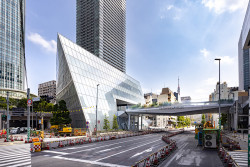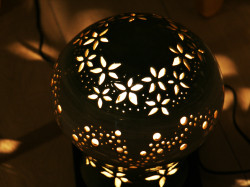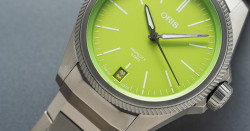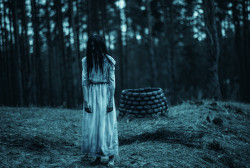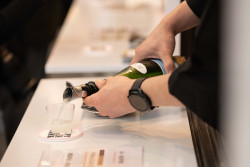
September 27, 2007
Yanagibashi Daikokuya
A classic tempura restaurant changes with the times—but not too much
By Metropolis
Originally published on metropolis.co.jp on September 2007
The ryotei restaurants and geisha houses that once crowded both sides of the Kanda River at Yanagibashi bridge faded away decades ago. Daikokuya, however, a tempura restaurant with 60 years of tradition, still evokes the spirit of that bygone era.
Completely rebuilt a year ago, Daikokuya is now a model of understated elegance. You remove your shoes at the genkan, which features a miniature stone garden and a tiny shrine to its namesake Daikoku, the god of wealth, prosperity and the kitchen. You are then led upstairs to either a tatami-matted waiting room with a view of the willow-lined Kanda River or to a small sitting room with an antique table, a hanging scroll and an ikebana arrangement of seasonal flowers.
Only 12 can sit at the curved burnt-orange lacquered counter, and once a place has been set, you’ll be led to the dining room. Before entering, you’ll be asked to don slippers to protect the hand-woven, custom-fit rattan mat floor.
The chef, dressed in white with a neat white cap, sits on a low chair in front of a small, shallow nabe shimmering with hot oil. Traditionally, tempura in Tokyo has always used only sesame oil, but the chef explains times have changed and the trend is toward lighter tastes. So, Daikokuya has switched to a blend of sesame and cottonseed oil.
Your place at the counter will be marked with a round, black lacquer tray set with a small bowl of lightly dressed salad, a bowl of tentsuyu dipping sauce, and a dish with a thimble-sized mountain of grated daikon to spice the tentsuyu.
Daikokuya serves Edomae tempura, literally “in front of Edo”—seafood caught in Tokyo Bay. This restriction is not strictly followed, however, as the delicate maki-ebi (young kuruma shrimp) which begin the meal are now caught in Kyushu. The chef cleans the shrimp, batters them, then slips them into the hot oil with a pair of long steel chopsticks. He’ll constantly monitor the temperature of the oil, strain out the flotsam of loose batter, and when the fritter is perfectly fried, place it on the folded white paper in front of your tray.
One by one, the seasonal lunch-course fritters, in their crisp golden crust, follow in an unhurried procession: two maki-ebi (including the delicate, crunchy heads), a kisu (whiting), a stalk of asparagus, a slice of satsumaimo (sweet potato), portions of anago (conger eel), a shiitake mushroom and, finally, kaki-age (a melange of batter, petit scallops, tiny shrimp and chunks of lotus root. The meal is served with a small bowl of rice, a tiny plate of house-made pickles, and a bowl of fragrant akadashi miso soup. Daikokuya provides a simple menu in English, and the staff is friendly and helpful. The lunch course is ¥3,675, and other courses run ¥6,300 and ¥10,500.
For dessert, you will retire to a special corner room overlooking the Yanagibashi bridge. On this visit, the meal ended with freshly made sherbet of white peach flecked with ruddy bits of skin.
On the wall, next to the shoji-screen window, is a framed black-and-white photo depicting the Daikokuya of 40 years ago surrounded by the tiled roofs of ryotei restaurants thick along the riverbank. Looking out at the willow trees, at the yakatabune boats tethered along the Kanda River, you can almost catch a glimpse of that era.


